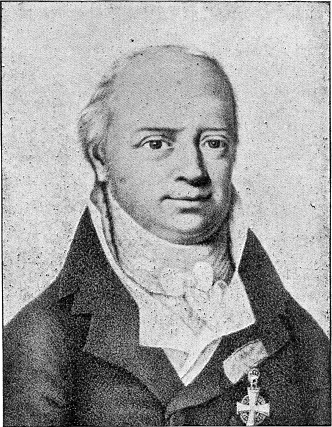|
Abutilon Guineense
''Abutilon guineense'' is a species of flowering plant in the mallow family, Malvaceae. It has a broad distribution in Africa and has been introduced elsewhere. It may comprise more than one species, with others yet undescribed. In China it occurs in Hainan, Sichuan, and Yunnan. ''Abutilon guineense'' was originally described by Heinrich Christian Friedrich Schumacher in 1829 as ''Sida guineensis''. Two varieties are accepted: *''Abutilon guineense''. var. ''guineense'' — calyx Calyx or calyce (plural "calyces"), from the Latin ''calix'' which itself comes from the Ancient Greek ''κάλυξ'' (''kálux'') meaning "husk" or "pod", may refer to: Biology * Calyx (anatomy), collective name for several cup-like structures ... bell-shaped, petals approximately long, staminal column smooth *''Abutilon guineense'' var. ''forrestii'' (S.Y.Hu) Y.Tang — calyx disk-shaped, petals long, staminal column stellate-hairy References {{Taxonbar, from=Q17573067 guineense Plants des ... [...More Info...] [...Related Items...] OR: [Wikipedia] [Google] [Baidu] |
Heinrich Christian Friedrich Schumacher
Heinrich Christian Friedrich Schumacher (15 November 1757 in Glückstadt, Holstein – 9 December 1830) was a Danish surgeon, botanist and professor of anatomy at the University of Copenhagen. Schumacher carried out significant research work in malacology, in other words on molluscs, and described several taxa. Life Early years (1757-1778) He was born to Joachim Christian Schumacher, a sergeant in the infantry of the Duchy of Schleswig, and his wife, Caroline Magdalene in Glückstadt in present-day Germany. In spite of his family's limited means, he received a good upbringing, and was sent to grammar school in Rendsburg. After confirmation became the apprentice of the regiment surgeon, Mehl, a learned and skilled man, who gave his eager student a thorough introduction to both medicine and botany, thereby waking Schumacher's natural gift for science. By 1773, at the age of 16, his keen efforts got him appointed as a military surgeon with his father's battalion in the army sta ... [...More Info...] [...Related Items...] OR: [Wikipedia] [Google] [Baidu] |
Edmund Gilbert Baker
Edmund Gilbert Baker (1864–1949) was a British plant collector and botanist. He was the son of John Gilbert Baker. Works * ''Synopsis of Malveae'', 1895 * ''The plants of Milanji, Nyassa-land''. Con James Britten. 1894 * ''Catalogue of the Plants collected by Mr. & Mrs. P.A. Talbot in the Oban district, South Nigeria. London'' (impreso por orden de Trustees, British Museum (Natural History) * ''Leguminosae of Tropical Africa'', part 1, 215, in 1926; part 2, -iii 216-607, Jul 1929; part 3, -iii 608-693, from 1930. Among species he named are '' Banksia burdettii'' and ''Banksia ashbyi ''Banksia ashbyi'', commonly known as Ashby's banksia, is a species of shrub or small tree that is endemic to Western Australia. It has smooth, grey bark, deeply serrated, hairy leaves and spikes of bright orange flowers. Description ''Banksi ...''. References {{DEFAULTSORT:Baker, Edmund Gilbert 1864 births 1949 deaths English botanists Fellows of the Linnean Society of London< ... [...More Info...] [...Related Items...] OR: [Wikipedia] [Google] [Baidu] |
Arthur Wallis Exell
Arthur Wallis Exell OBE (21 May 1901, in Birmingham – 15 January 1993, in Cheltenham) was initially an assistant and later Deputy Keeper of Botany at the British Museum during the years 1924–1939 and 1950–1962. A noted cryptographer, taxonomist and phytogeographer, he was notable for his furthering of botanical exploration in tropical and sub-tropical Africa, and was an authority on the family Combretaceae. Exell's formal education started at Queen Elizabeth Grammar School in Warwickshire, and then King Edmund's School in Birmingham. From there he went on to Emmanuel College, Cambridge and was awarded an M.A. in 1926, having joined the British Museum as a second-class assistant on 11 August 1924, eventually becoming Deputy Keeper of Botany in 1950. He was entrusted with the Polypetalae, although his first paper was a morphological study of the hymenium in three species of fungus. Exell's first contact with Africa was in 1932/3 when he travelled to the islands in the Gu ... [...More Info...] [...Related Items...] OR: [Wikipedia] [Google] [Baidu] |
Flowering Plant
Flowering plants are plants that bear flowers and fruits, and form the clade Angiospermae (), commonly called angiosperms. They include all forbs (flowering plants without a woody stem), grasses and grass-like plants, a vast majority of broad-leaved trees, shrubs and vines, and most aquatic plants. The term "angiosperm" is derived from the Greek words ἀγγεῖον / ('container, vessel') and σπέρμα / ('seed'), meaning that the seeds are enclosed within a fruit. They are by far the most diverse group of land plants with 64 orders, 416 families, approximately 13,000 known genera and 300,000 known species. Angiosperms were formerly called Magnoliophyta (). Angiosperms are distinguished from the other seed-producing plants, the gymnosperms, by having flowers, xylem consisting of vessel elements instead of tracheids, endosperm within their seeds, and fruits that completely envelop the seeds. The ancestors of flowering plants diverged from the common ance ... [...More Info...] [...Related Items...] OR: [Wikipedia] [Google] [Baidu] |
Malvaceae
Malvaceae, or the mallows, is a family of flowering plants estimated to contain 244 genera with 4225 known species. Well-known members of economic importance include okra, cotton, cacao and durian. There are also some genera containing familiar ornamentals, such as '' Alcea'' (hollyhock), '' Malva'' (mallow), and ''Tilia'' (lime or linden tree). The largest genera in terms of number of species include ''Hibiscus'' (300 species), '' Sterculia'' (250 species), '' Dombeya'' (250 species), '' Pavonia'' (200 species) and '' Sida'' (200 species). Taxonomy and nomenclature The circumscription of the Malvaceae is controversial. The traditional Malvaceae ''sensu stricto'' comprise a very homogeneous and cladistically monophyletic group. Another major circumscription, Malvaceae '' sensu lato'', has been more recently defined on the basis that genetics studies have shown the commonly recognised families Bombacaceae, Tiliaceae, and Sterculiaceae, which have always been considered closely a ... [...More Info...] [...Related Items...] OR: [Wikipedia] [Google] [Baidu] |
Hainan
Hainan (, ; ) is the smallest and southernmost province of the People's Republic of China (PRC), consisting of various islands in the South China Sea. , the largest and most populous island in China,The island of Taiwan, which is slightly larger, is claimed but not controlled by the PRC. It is instead controlled by the Republic of China, a '' de facto'' separate country. makes up the vast majority (97%) of the province. The name means "south of the sea", reflecting the island's position south of the Qiongzhou Strait, which separates it from Leizhou Peninsula. The province has a land area of , of which Hainan the island is and the rest is over 200 islands scattered across three archipelagos: Zhongsha, Xisha and Nansha. It was part of Guangdong from 1950–88, after which it resumed as a top-tier entity and almost immediately made the largest Special Economic Zone by Deng Xiaoping as part of the then-ongoing Chinese economic reform program. Indigenous peopl ... [...More Info...] [...Related Items...] OR: [Wikipedia] [Google] [Baidu] |
Sichuan
Sichuan (; zh, c=, labels=no, ; zh, p=Sìchuān; alternatively romanized as Szechuan or Szechwan; formerly also referred to as "West China" or "Western China" by Protestant missions) is a province in Southwest China occupying most of the Sichuan Basin and the easternmost part of the Tibetan Plateau between the Jinsha River on the west, the Daba Mountains in the north and the Yungui Plateau to the south. Sichuan's capital city is Chengdu. The population of Sichuan stands at 83 million. Sichuan neighbors Qinghai to the northwest, Gansu to the north, Shaanxi to the northeast, Chongqing to the east, Guizhou to the southeast, Yunnan to the south, and the Tibet Autonomous Region to the west. In antiquity, Sichuan was the home of the ancient states of Ba and Shu. Their conquest by Qin strengthened it and paved the way for Qin Shi Huang's unification of China under the Qin dynasty. During the Three Kingdoms era, Liu Bei's state of Shu was based in Sichuan. T ... [...More Info...] [...Related Items...] OR: [Wikipedia] [Google] [Baidu] |
Yunnan
Yunnan , () is a landlocked province in the southwest of the People's Republic of China. The province spans approximately and has a population of 48.3 million (as of 2018). The capital of the province is Kunming. The province borders the Chinese provinces of Guizhou, Sichuan, autonomous regions of Guangxi, and Tibet as well as Southeast Asian countries: Vietnam, Laos, and Myanmar. Yunnan is China's fourth least developed province based on disposable income per capita in 2014. Yunnan is situated in a mountainous area, with high elevations in the northwest and low elevations in the southeast. Most of the population lives in the eastern part of the province. In the west, the altitude can vary from the mountain peaks to river valleys by as much as . Yunnan is rich in natural resources and has the largest diversity of plant life in China. Of the approximately 30,000 species of higher plants in China, Yunnan has perhaps 17,000 or more. Yunnan's reserves of aluminium, lead, ... [...More Info...] [...Related Items...] OR: [Wikipedia] [Google] [Baidu] |
Calyx (botany)
A sepal () is a part of the flower of angiosperms (flowering plants). Usually green, sepals typically function as protection for the flower in bud, and often as support for the petals when in bloom., p. 106 The term ''sepalum'' was coined by Noël Martin Joseph de Necker in 1790, and derived . Collectively the sepals are called the calyx (plural calyces), the outermost whorl of parts that form a flower. The word ''calyx'' was adopted from the Latin ,Jackson, Benjamin, Daydon; A Glossary of Botanic Terms with their Derivation and Accent; Published by Gerald Duckworth & Co. London, 4th ed 1928 not to be confused with 'cup, goblet'. ''Calyx'' is derived from Greek 'bud, calyx, husk, wrapping' ( Sanskrit 'bud'), while is derived from Greek 'cup, goblet', and the words have been used interchangeably in botanical Latin. After flowering, most plants have no more use for the calyx which withers or becomes vestigial. Some plants retain a thorny calyx, either dried or live, a ... [...More Info...] [...Related Items...] OR: [Wikipedia] [Google] [Baidu] |
Abutilon
''Abutilon'' is a large genus of flowering plants in the mallow family, Malvaceae. It is distributed throughout the tropics and subtropics''Abutilon''. Flora of China. of the Americas, Africa, Asia, and Australia. General common names include Indian mallow''Abutilon''. Integrated Taxonomic Information System (ITIS). and velvetleaf; ornamental varieties may be known as room maple, parlor maple, or flowering maple. The genus name is an 18th-century word that came from the Arabic ' (), the name given by |
Plants Described In 1829
Plants are predominantly photosynthetic eukaryotes of the kingdom Plantae. Historically, the plant kingdom encompassed all living things that were not animals, and included algae and fungi; however, all current definitions of Plantae exclude the fungi and some algae, as well as the prokaryotes (the archaea and bacteria). By one definition, plants form the clade Viridiplantae (Latin name for "green plants") which is sister of the Glaucophyta, and consists of the green algae and Embryophyta (land plants). The latter includes the flowering plants, conifers and other gymnosperms, ferns and their allies, hornworts, liverworts, and mosses. Most plants are multicellular organisms. Green plants obtain most of their energy from sunlight via photosynthesis by primary chloroplasts that are derived from endosymbiosis with cyanobacteria. Their chloroplasts contain chlorophylls a and b, which gives them their green color. Some plants are parasitic or mycotrophic and have lost the abil ... [...More Info...] [...Related Items...] OR: [Wikipedia] [Google] [Baidu] |





